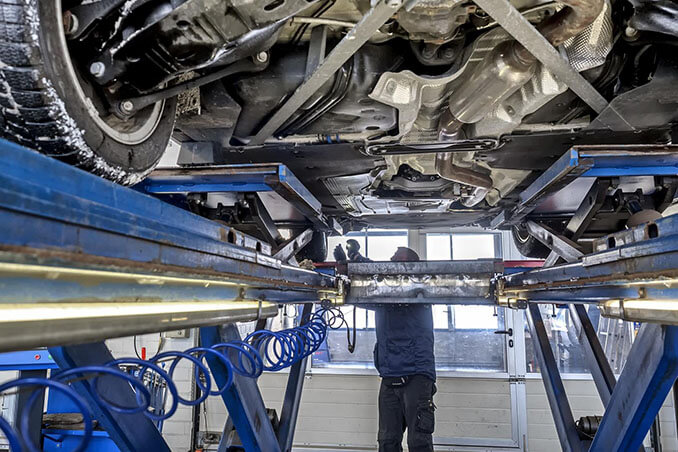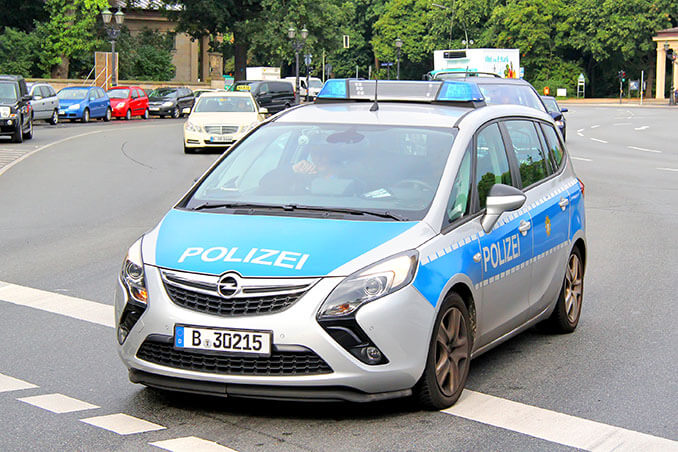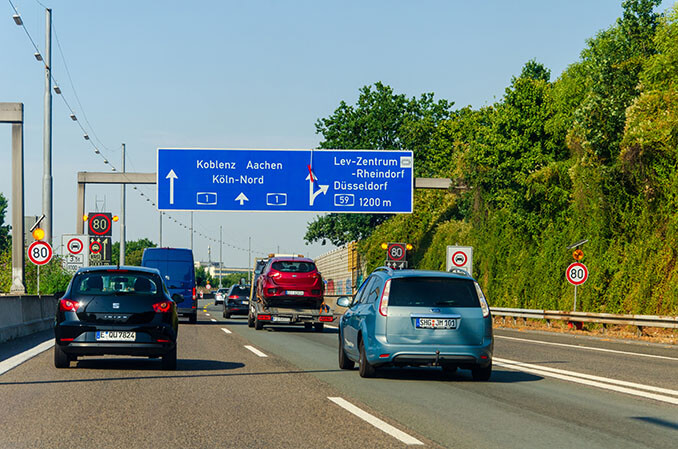What should every novice driver pay attention to? The driving school cannot convey everything; a lot of what makes a good driver comes only through routine. However, nowhere does it say that you have to “experience” this knowledge entirely on your own. For this reason, you will find many useful ones below tips about the car and driving, picking up where your driving instructor left off.
How to recognize maintenance covers
Once a month you should check the fluid levels and tire pressure in the car. But while the tire valves are unmissable, the containers in the jam-packed engine compartment are such a thing…
Here’s the trick: everything what is designed to be inspected by the driver is colour-coded. Mostly in yellow, rarely red. Applies to the handle of the oil dipstick as well as the cover of the washer fluid tank and Co. Checking the oil level is not rocket science either.

How you deal with the insurance
No registration without insurance. But: In order to register your first car, it is enough if you from any Insurance have an eVB number – any institute where you are a customer for another product can issue this to you. It is proof of basic coverage through motor vehicle liability insurance. A refusal is only possible with good reasons, which should hardly affect you as a newcomer without previous claims or premium delays. And: You don’t have to stay with this insurance afterwards.
The rest is no problem either:
- Compare with the key number from your vehicle documents provider. That goes online. Although they are all based on the so-called type classes, there are still considerable price differences.
- Don’t be forced to take out fully comprehensive insurance. If your car isn’t brand new, it’s usually not worth it.
- Beware of excess deductibles. The risk of minor damage is significantly greater – which you then have to shell out for the most part yourself.
2 minute video: what is a type class?
By the way, you should always talk to family members to see if someone can help you with no-claims discounts. It is their lack that otherwise seriously increases the cost of insurance.
Which signs you should remember
Did you also have the hardship of cramming street signs for theoretical and practical exams? No wonder, after all there are several hundred different ones in Germany. Here’s a secret: you will rarely, if ever, encounter most of them.
What you should remember can be counted on two hands: Above all, it’s the signs for speeds, Right of way and rules for stopping – about that stop sign. The large, also everyday rest is self-explanatory or even clearly labeled.
How to deal with the TÜV
The main inspection (HU) is a feared opponent for many drivers. After all, she decides whether the car is roadworthy – and many cars have defects. You don’t actually have to be afraid of the examiners with the bright flashlights.

The answer is in your glove compartment. The vehicle checkbook in which maintenance work is entered. Your car should get a workshop inspection once a year. It doesn’t have to be a brand workshop. Any specialist workshop may also fill out the checkbook if it works according to the manufacturer’s specifications.
This costs you money, but has huge advantages:
- During the inspection, among other things, the same things are checked that are also checked at the HU. Inspection ok means Main inspection ok.
- During the inspection, imminent damage can be detected early on – before it grows into larger, more expensive problems at the inspection date.
- A full checkbook is a high quality feature when buying a used car and will bring you more money when you sell it.
Another tip: when examiners are shown a dirty, messy car, they tend to be more wary. Cleaning increases your chances that the exam will go faster because the professional only focuses on the prescribed basics.
How to behave at police controls
No question, when a man in uniform suddenly waves a red and white trowel in front of you, you always feel somehow guilty. Especially if it’s your first police check and you’re traveling alone.

You weren’t too fast, didn’t do anything else illegal? Then you can be totally relaxed. Most important rule:
Police officers are only human.
If you are polite to them, they will also be polite to you.
Traffic stops are the wrong time for rude bricking. That will only prolong control. Because you have rights, but also obligations towards the officials.
This is how the procedure is short and painless:
- Stop where you are directed. If the police are behind you, use the blinker to the right and stop where it suits you. You don’t have to brake immediately and pull to the right.
- If it’s twilight or dark, switch on your interior lights while you’re rolling out.
- Roll down your window, but then put both hands on top of the steering wheel – cops can get a little nervous if their hands aren’t immediately visible.
- If you are asked to show your driver’s license and registration papers, tell the officers where they are and move slowly. Don’t just grab for your wallet or the glove compartment. Keep in mind that cops can expect to see a serious criminal in front of them reaching for a gun.
- If you don’t have documentation with you, just admit it instead of making excuses. Either way, you have to show them to a police station and pay a fine of ten euros.
- Answer questions truthfully and keep your cool. The police don’t want to “frame” you, they just want to carry out a routine check. As a young driver you belong to a risk group for many traffic offences, that will be the only reason why you will be checked.
A little tip: resist the urge to unbuckle yourself when rolling out. If the police officers then come to the car, it looks as if you were driving without a seat belt the whole time and there is a risk of a fine.
How to get driving experience
Every kilometer makes you a safer driver. You should therefore take every opportunity to drive. A few tips:

- Drive Not always only yours everyday routes, but also complete Sunday tours and the like. Man learns especially by doing unknown routes mastered.
- If it makes sense form a carpoolwhere you hear from the passengers “fuel money“ get. Then there’s the routine on the trips that are necessary anyway, something for them tank filling.
- Get a driving safety training course for your next birthday. That costs 100 to 150 euros. It is important that you not only correct behaviorThen what correct behavior with your everyday vehicle in Learn extreme situations. It doesn’t help if your driving school car was a VW Golf, but you now drive a Ford Kuga.
Video: Safety training is so much fun
Another piece of good advice: don’t become a “fair-weather driver”. Force yourself to ride in all weather conditions. adjust your speed be ready to brakethen this will have no consequences except high driving routine.
Pass this article on if you know someone who should read this.
